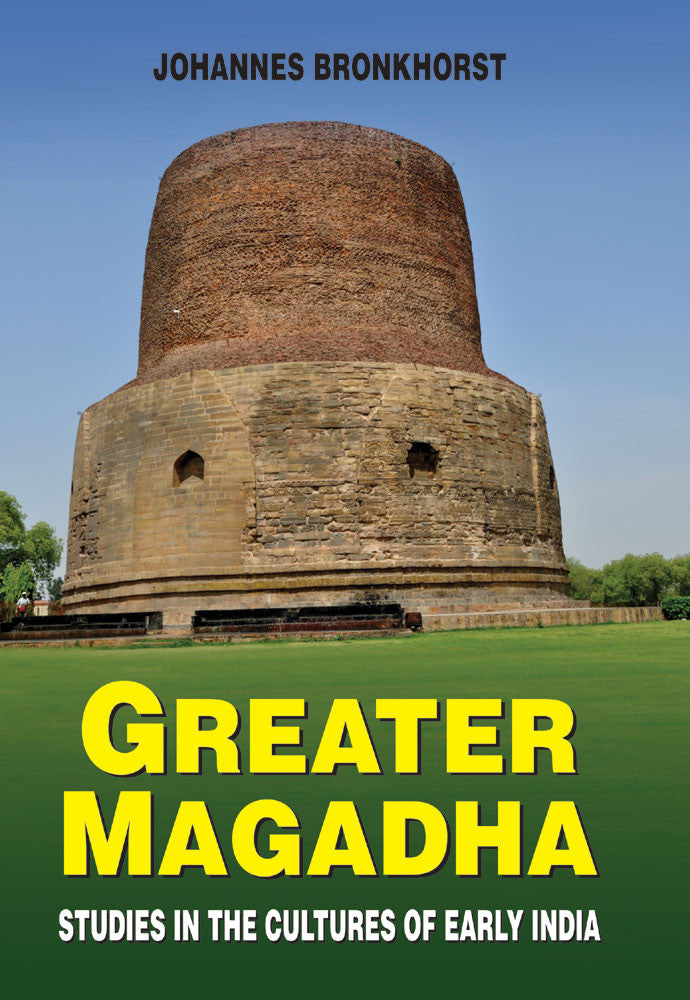Greater Magadha: Studies in the Cultures of Early India
![]() 100% Genuine New Books
100% Genuine New Books
![]() Fast Shipping with Tracking Number
Fast Shipping with Tracking Number
Secure Payments via UPI, Cards & Wallets
![]() Trusted Support & Easy Returns
Trusted Support & Easy Returns
Greater Magadha: Studies in the Cultures of Early India - Hardcover is backordered and will ship as soon as it is back in stock.
ISBN : 9788120835344, 8120835344
Year of Publication : 2013
Edition : 1st
No. of Pages : 414
Language : English
Condition : New
Publisher: Motilal Banarsidass Publishing House
Free shipping on orders over Rs. 249
Free shipping on orders over Rs. 249
We offer free shipping on orders above Rs. 249 in India. For orders below this threshold, a nominal shipping fee may apply, which will be clearly indicated during the checkout process.
How long will it take to receive my order?
How long will it take to receive my order?
The delivery time varies depending on your location. Generally, orders are processed and shipped within 1-3 business days. Once shipped, you can track and expect your order to arrive within 3-7 business days (the duration may vary depending on your location). For more information, please refer to our shipping policy.
Chat with a Real Person
Chat with a Real Person
WhatsApp chat is dedicated to assisting with after-sales queries regarding delivery, returns, and payments. Click below to initiate chat with us on WhatsApp:
[Bookstaa WhatsApp Chat].
For all other inquiries, please visit our customer support page or email us at support@bookstaa.com.
Couldn't load pickup availability
Description
Description
Greater Magadha, roughly the eastern part of the Gangetic plain of northern India, has so far been looked upon as deeply indebted to Brahmanical culture. Religions such as Buddhism and Jainism are thought of as derived, in one way or another, from Vedic religion. This belief is defective in various respects. The book argues for the importance and independence of Greater Magadha as a cultural area until a date close to the beginning of the Common Era. In order to correct the incorrect notions, two types of questions are dealt with: questions pertaining to cultural and religious dependencies, and questions relating to chronology. As a result a modified picture arises that also has a bearing on the further development of Indian culture. The book is arranged in five parts. Part-I describes cultural features of Greater Magadha, under which there are three chapters-The Fundamental Spiritual Ideology, Other Features and Conclusions. Part-II: Brahmanism vis-a-vis Rebirth and Karmic Retribution has three sections- Hesitantly Accepted, Rebirth and Karmic Retribution Ignored or Rejected, and Urban Brahmins. Under section one there are chapters on„ Dharma Sutra, a portion from the Mahabharata and the early Upanisads. Section two features chapters on Rebirth and Karmic Retribution Ignored and Rebirth and Karmic Retribution Rejected. Section three is on urban Brahmins. Part-III dwells on the chronological issues, - linguistic consideration, the Vedic texts known to the early Sanskrit grammarians, to the early Buddhists, some indications in late-Vedic literature, urban versus rural culture, etc. Part-IV is Conclusion, while Part V has useful appendices-The antiquity of the Vedanta philosophy, a Carvaka in the Mahabharata, Vedic texts known to panini, the form of the Rgveda known to Panini, Vedic texts known to Patanjali, Brahmins in the Buddhist canon, Brahmanism in Gandhara and surrounding and Carvakas and the Sabarabhasya. The book also contains references and index. Review(s) About the Author(s)
JOHANNES BRONKHORST is Professor of Indian Studies at the University of Lausanne, Switzerland. He has authored several books and articles on traditional Sanskrit linguistics, Indian thought, the history of asceticism and meditation in Indian religions.
About the Publisher

Motilal Banarsidass Publishing House (MLBD)
Motilal Banarsidass Publishing House, popularly known as MLBD, is one of the oldest and most prestigious publishing houses in India, established in 1903.
With over a century of legacy, MLBD has been at the forefront of publishing scholarly works in the fields of Indology, Sanskrit, philosophy, religion, spirituality, yoga, Buddhism, and Jainism.
Renowned for its authenticity and academic rigour, MLBD's books are trusted by researchers, scholars, and readers across the globe.
With more than 5,000 titles in circulation, MLBD continues to uphold its commitment to preserving and promoting India’s rich cultural and philosophical heritage.
Bookstaa is an authorized distributor of MLBD books, ensuring 100% genuine and original publications for our readers.

